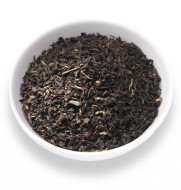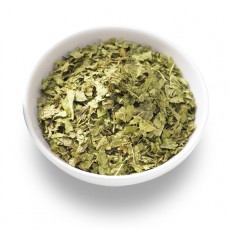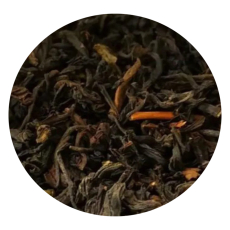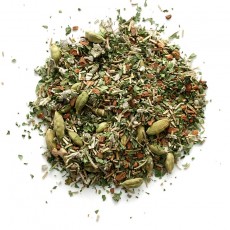Pyra Pack Tea Bags
Flavoured Black Tea
First Flush Black Tea
Pyramid Tea Bags
Teabags
Deli Pack
Pyra Pack Tea Bags
Black Tea
Flavoured Black Tea
The History of Black Tea

When it comes to popularity in the West, black tea stands head and shoulders above the rest. Made from the same tea leaves as green and oolong tea, black tea owes its characteristics to the way that it is produced.
As green tea is unfermented, and oolong semifermented, so black tea is a fully fermented tea: that is to say, one whose leaves are left to oxidise completely.
Black tea was first produced in the Fujian province during the Ming Dynasty.
There are different versions of this story but one legend says that an army entering the Fujian Province were exhausted and so stopped for a rest. They just so happened to stop near a tea factory where the leaves were drying out in the sun.
The army wanted to try these leaves and needed to speed up the drying process so they could carry on with their journey after their rest. To do so, they decided to smoke the leaves and inadvertently invented the Lapsang Souchong variation of black tea.
Another story goes that the famous Emperor Shennong, Father of Agriculture, had an awareness of health and hygiene far ahead of his time.
He believed that all water should be boiled before it was consumed so on a long journey one day he made his servants sit down and boil some water.
Some leaves from a nearby Camellia tree accidently blew into the water and the water turned brown and black tea infused! He tried the liquid and enjoyed it.
Black tea remains the most popular tea variety worldwide with a rich cultural importance in many countries.
Originally, black tea was dried and stored in bricks enabling it to retain its distinct colour and flavour for many years and was therefore historically used as an important bargaining tool in trade agreements. This was well before people knew much about food preservation. T
he drying method would also ferment the tea in a way that would increase the amount of caffeine per cup compared to other teas. The caffeine was important because this meant black tea could be used to boost energy for meditating monks, those on long voyages or for medicinal purposes.
While all black teas tend to be stronger in taste, and higher in caffeine, than the less-fermented teas, their other characteristics are far from uniform.
Black teas come in a kaleidoscope of flavours – and we are proud to stock some of the best from around the world.
Popular varieties of black tea include Darjeeling tea, widely acknowledged to be the finest black tea in the world, Assam tea and Ceylon tea, including the classic English Breakfast.
the production of black tea

Immediately after picking, the fresh green leaves start their journey through the five stages of traditional tea production as described below
Withering
The tea is spread out on large withering racks and fanned with warm air for around 12 – 18 hours. This is how long the withering process takes, during which the leaf loses up to 60% of its moisture and a considerable amount of its volume.
Rolling
In the rolling machine rotating discs break open the leaf cells in the tea leaves without destroying them. This releases the cell juice. The liquid in the cells oxidises with the oxygen in the air and fermentation begins.
Oxidizing (Fermenting)
Rolling sets off fermentation – an oxidation process that takes around 2 – 3 hours. The cell sap comes into contact with oxygen and begins to oxidise. The leaves take on a coppery red colour and the tea acquires it characteristic aroma. The quality of the tea later on depends on the skills of the fermentation master, since he decides how long the process lasts. This process of fermentation determines the flavour of the tea: the shorter the process, the fresher the flavour and the lighter the tea is in colour. Longer fermentation produces stronger and darker teas.
Drying
The residual moisture is extracted from the tea at 90C in a multi-level dryer and the oxidised cell juice dries on the leaf. This is when tea darkens and becomes black in colour. This process takes around 20 minutes and is monitored carefully to ensure that the tea does not develop a burnt taste. Residual humidity: 3%
Grading
In this final step, the tea is graded into four different leaf grades using vibrating sifts. The sifting process produces high quality leaf teas, broken teas, fannings and tea dust.
Premium teas like we sell at Cup of Tea can only be produced using the traditional, orthodox method as described above. However only about 20 to 25% of the entire worldwide tea production is manufactured using the gentle orthodox method, the majority of all tea produced is by using the must faster more economical process of CTC production.
CTC stands for Crushing, Tearing and Curling. It is an automated mass production that brings out only simple flavours, no fine aromas and no large leaf grades. It takes only 8 to 12 hours to produce one batch of black tea versus 20 to 24 hours it takes by using the traditional orthodox way.
None of the teas we sell comes under the grade ‘dust’.
Decoding The Acryonyms
In the course of tea history, English terms and combinations of letters describing the various qualities of tea have become standard:
- Fine: Fine, excellent quality.
- Tippy: Tips are the light-coloured leaf buds. They contain less cell sap and do not become as dark during fermentation.
- Golden: This description indicates golden brown teas and is only used for teas from India.
- Flowery: This term describes the fragrance and aroma of a tea.
- Orange: This is an indication of a special quality. It can be traced back to the Dutch Royal House of Orange and means royal, exquisite and simply especially good.
- Pekoe: This Chinese word (=white down), refers to the fine, this hairs on the jagged leaf edge of young, delicate tea leaves. In this combination both the terms Orange and Pekoe are used to describe the tea grade.
- Broken: Broken and, therefore, a small-leafed tea.
- Fannings: These are the larger pieces of the small leafed particles left after sifting. They are ideal for top quality tea bags like our Teavelope range.
- Dust: This is the lowest grade left after the final sift. Because it is so fine, it is called dust. None of the teas we have on offer contains Dust grade.
Next time you see a collection of letters on your tea’s label you can now read the details and ‘decode’ them as per the following example FTGFOP which read like ‘Fine, Tippy, Golden, Flowery, Orange, Pekoe’. The description indicates a carefully sifted tea with plenty of light-coloured and golden brown leaf tips, a richly flowery aroma and delicate leaves of the highest quality grade.
First Flush Darjeelings
Second Flush Darjeelings
Harvested slightly later in the spring, second flush Darjeelings boast a more intense, full-bodied flavour than their first flush predecessors. Add to this a warm, golden-amber colour and mellow aroma, and the result is a tea that is simply delightful. If proof of this is needed, it can be found among our selection of second flush Darjeelings, such as Darjeeling Summer Gold or Margaret’s Hope.
Assam Teas
A neighbour to Darjeeling, the Indian state of Assam is famed as the largest tea-growing region in the world. Fertile, low-lying land and a hot, wet climate combine to produce teas that are dark in colour, with a strong, malty flavour: the perfect choice for those who prefer their tea with a dash of milk or sugar. Assam Bari, Assam Nahorabi, Assam Broken Gold Tip or Assam Boisahabi are among our favourites – why not give them a try?
Ceylon Teas
One of the largest black tea exporters in the world, Sri Lanka – formerly Ceylon – produces a wide variety of top-quality teas. From Uva in the east, Dimbula in the west and Nuwara Eliya in between, come some of the best teas in Sri Lanka. Teas whose fragrant aromas and crisp, citrus flavours create nothing short of a sensory delight. Ceylon teas are delicious as single estate teas or as part of a black tea blend. The most sought-after varieties include Inverness, Orange Pekoe and the blended classic English Breakfast.
Chinese Black Teas
Produced mainly for export, Chinese black tea originates from the southern regions of China. Typically mild, with a deep, earthy flavour, these teas are generally low in tannin and caffeine. And, because their leaves are so carefully crafted, Chinese black teas are notable for their looks, as well as their taste. Popular Chinese black teas include Lapsang Souchong, Keemun, Yunnan and Pu Erh.
Other black teas
In addition to teas from the larger tea-growing areas, we offer a selection of black teas from lesser-known regions such as Nepal, Sikkim and Southern India





 EARN POINTS WITH OUR LOYALTY SCHEME
EARN POINTS WITH OUR LOYALTY SCHEME






























